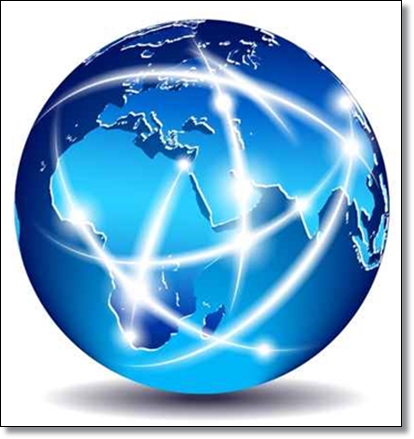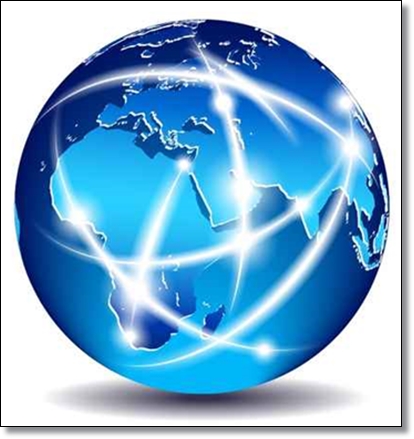Has Africa Reached a Tipping Point?

 |
Africa is now the cynosure of the global community due to unusual, extraordinary circumstances and trends. The big question is whether African leaders can take advantage of these unique circumstances and trends by moving decisively and effectively to turn the continent into a global destination of prosperity within the next few decades. To answer this question, it is necessary to briefly review why Africa is now the toast of the global community.
Africa, the Toast of the World
The August 4-7, 2014 U.S.-Africa Leaders’ Summit in Washington, DC is a case in point. President Obama’s unprecedented meeting with up to 50 African heads of state and governments indicates a strategic recognition of Africa’s growing clout. The Africa Development Bank and the World Bank report that Africa is home to six of the ten fastest growing economies in the world. For the first time in five decades, foreign direct investment in Africa at about $50billion a year rivals foreign aid. Official remittances from Africans in the Diaspora at more than $60billion now surpass foreign direct investment and foreign aid, respectively. Since as much as 75% of Diaspora remittances are informal as noted by the BBC NEWS, annual total remittances may be close to $180billion.
The Mo Ibrahim Foundation reports that between 2010 and 2017, Africa will likely record a mind boggling 70% increase in the exploration of 15 precious minerals coveted by the rest of the world compared to 30% increase in Asia and the Americas. The cost of mineral exploration in Africa is about one tenth for similar activities in mineral resources powerhouses, Canada and Australia, further enticing savvy global investors and conglomerates. Africa has huge untapped potential in tourism, with estimates that visitors to the continent may reach 134 million by 2030 from 52 million in 2012, creating up to 10 million jobs. The capacity to generate renewable energy resources in the continent is substantial in areas such as solar, wind, hydroelectric power and geothermal sources.
Africa appears poised to take advantage of its immense human development potentials in coming decades. Multilateral institutions, think tanks, investment banks, foundations and advocacy groups project that by 2050, Africa will have more workers than China or India. Africa’s middle class will increasingly become a global force in disposable spending, fueling accelerated economic growth. The relatively lower cost of labor will also attract additional external investments.
Trade and investment is booming in Africa. Global investors continue to buy corporate and sovereign African bonds, with 2014 figures likely to outpace record 2013 $16.6 billion sales, according to the Standard Bank Group, the largest lender in the continent. The Bloomberg News reports that China’s annual trade and investment portfolio in Africa is now $200billion, twice that of the United States and nearly ten times higher than two decades ago. China also plans to extend $1 trillion credit facilities to African countries by 2015. In addition, China’s premier, Li Keqiang during his May 2014 visit to Africa pledged assistance in any effort to connect all African capitals by high speed rail, according to the Wall Street Journal.
Additionally, Brazil, India, the Gulf States, Malaysia, Singapore, South Korea, Indonesia and other emerging economic powers have significantly ramped up trade and investment partnerships with African countries. The European Union Commission indicates that “South-South” trade overtook “North-South” trade since 2007. Africa’s trade with the South grew more than 200% between 2007 and 2010. Even in new areas of environmental goods and services such as renewable energy technologies, South-South trade is the fastest growing segment of a projected $1.9 trillion market by 2020, according to the United Nations Environment Program.
Growing unity among South countries economic powers is creating unprecedented new global trends. Brazil, Russia, India, China and South Africa (BRICS countries) recently announced two game changing initiatives: (1) the establishment of a fully capitalized $50billion BRICS Development Bank to finance infrastructure and sustainable development projects in poor countries, and (2) the incorporation of a $100billion Contingency Reserve Fund to assist developing countries undergoing financial difficulties. These two initiatives take direct aim at current portfolios of the World Bank and the International Monetary Fund, respectively, increasing competitive alternatives for poor nations.
Formidable Hurdles and Challenges Remain
Despite these advantageous trends, Africa faces significant hurdles and challenges. These hurdles and challenges have been previously captured in past publications by the authors. The Africa Development Bank, the World Bank, the Mo Ibrahim Foundation and the McKinsey Global Institute have also done extensive work in this area. A continent that has 3% of the global health workforce despite accounting for 24% of the global burden of diseases is in trouble. Unemployment rates in some African countries are more than 50 percent. A continent where the informal sector accounts for 55% of the GDP and nearly 80% of the labor force is living on economic tenterhooks. Industrialization efforts may remain stillborn due to untapped 95% hydroelectric power potential in the continent and extension of regular electricity to only a quarter of Africans. Africa has the lowest share of engineering graduates in the world despite the gargantuan challenge of how to structurally transform its extractive industries to better meet economic needs. Despite regular famines over the past four decades, average budgetary allocation to agriculture hover around 6 percent.
Young men and women in Africa remain largely outside mainstream political and economic life due to issues such as highest primary school drop-out rates in the world, lowest secondary and tertiary school enrolments in the world, poor post-education technical skill sets and stubborn high unemployment rates. It is also notoriously difficult to break into Africa’s entrenched ruling political and economic class without ‘connections.” This is a dangerous scenario in a continent with significant youth population bulge, with individuals less than 24 years of age likely to account for 50% of Africa’s population by 2050.
In addition, regional integration efforts appear stymied due to a combination of factors. These include political squabbles, prohibitively expensive and ineffective intra-Africa trade between countries (less than 10% of all trade) and draconian custom regulations that slow down legal movement of people, goods and services. Dearth of reliable air/water/land transportation network is another obstacle.
Opportunities for Decisive Action by African Leaders
No situation, circumstance or trend remains stagnant. Africa today is the beautiful bride of the global community. This scenario can change, sometimes, with little or no warning. For example, any African oil producing country relying on more than six decades of United States (U.S.) quest to guarantee oil imports to sustain domestic demand will be in for a rude awakening: the U.S. Energy Information Administration indicates that domestic oil production quadrupled between 2008 and 2012 due to better exploration of existing oil wells and access to new shale oil formations, with the U.S. now reducing oil imports from African countries.
In summary, African leaders need to make bold, strategic decisions today on how best to make Africa an epicenter of global prosperity in coming decades. Inaction or business-as-usual responses will not be sufficient as policymakers worldwide work overtime to adapt to sometimes seismic shifts in geopolitical and economies priorities.
We recommend that African leaders should consider the following strategic decisions, taking appropriate operational action where necessary:
1.Multi-sectoral Infrastructure Strategy. Targeted transportation, power and information technology infrastructure projects can transform ALL SECTORS of the economy in the continent.
2.Industrialization Strategy heavily reliant on multi-sectoral infrastructure improvements and built on a foundation of robust continental science and technology architecture. The key is to incentivize small and medium enterprises to ramp up manufacturing services and transition into major operations. Industrialization requires close collaboration with the organized private sector, the academia and labor unions.
3.Inclusive Economic Growth. Africa cannot afford a jobless growth trajectory with its army of unemployed. This effort will require a sound public sector alive to its regulatory and enforcement responsibilities; a thriving private sector committed to both profit and social responsibility, and; a vibrant civil society keeping societal leaders and public/private institutions on the straight and narrow path.
4.Democratic and Governance Reform Strategy to ensure verifiable citizen participation, assure sanctity of elections, build strong institutions, improve transparency, efficiency and effectiveness of the public sector, enforce human rights and implement public safety services anchored on rule of law.
5.Regional Integration Strategy built around close working relationship between the African Union Commission, the Africa Development Bank, the United Nations Economic Commission for Africa and Regional Economic Communities. The emphasis will be on tight coordination of political, policy and technical priorities at continental and bilateral levels.
6.Multi-dimensional Youth Development Strategy to secure Africa’s future. Nothing is more important at this stage of Africa’s development. Youth development strategy should anchor on age-appropriate schooling, timely access to health and social services, seamless transition to young adult societal responsibilities and incentives to participate in nation building.
7.Nutrition Self Sufficiency Strategy. Africa cannot move to the next level without feeding its own people. This will require a bottom-to-top revolution in agriculture with investments in efficient food production, storage, distribution, consumption and commercial services.
8.Africa Diaspora Strategy. This is likely to be one of the toughest challenges for African leaders as a new strategy must transition from symbolism to specific initiatives and projects. The Diaspora like its Chinese and Indian counterparts can play indispensable direct and catalytic roles in Africa’s future. Its remittances sustain households in virtually every family and community in the continent. The next challenge is to transition the immense investment and technical potential of African Diaspora at national, regional and continental levels in Africa.
By Chinua Akukwe and Melvin Foote
Dr. Chinua Akukwe (CAKUKWE@ATT.NET) is a Board Member of the Constituency for Africa, Washington, DC. He is a former Chair of the Technical Advisory Board of the Africa Center for Health and Human Security at the George Washington University, Washington, DC. He currently serves as a Fellow and Chair of the Africa Working Group, National Academy of Public Administration, Washington, DC.
Melvin Foote (MFOOTE2420@AOL.COM) is the Founder, President and Chief Executive of the Constituency for Africa (CFA), Washington, DC. He has more than 35 years of direct, continuous experience on U.S./Africa relations.
